How to make a small room look bigger: 14 simple styling ideas
Wondering how to make a small room look bigger? These creative, low-cost styling tricks can help to maximise any small space
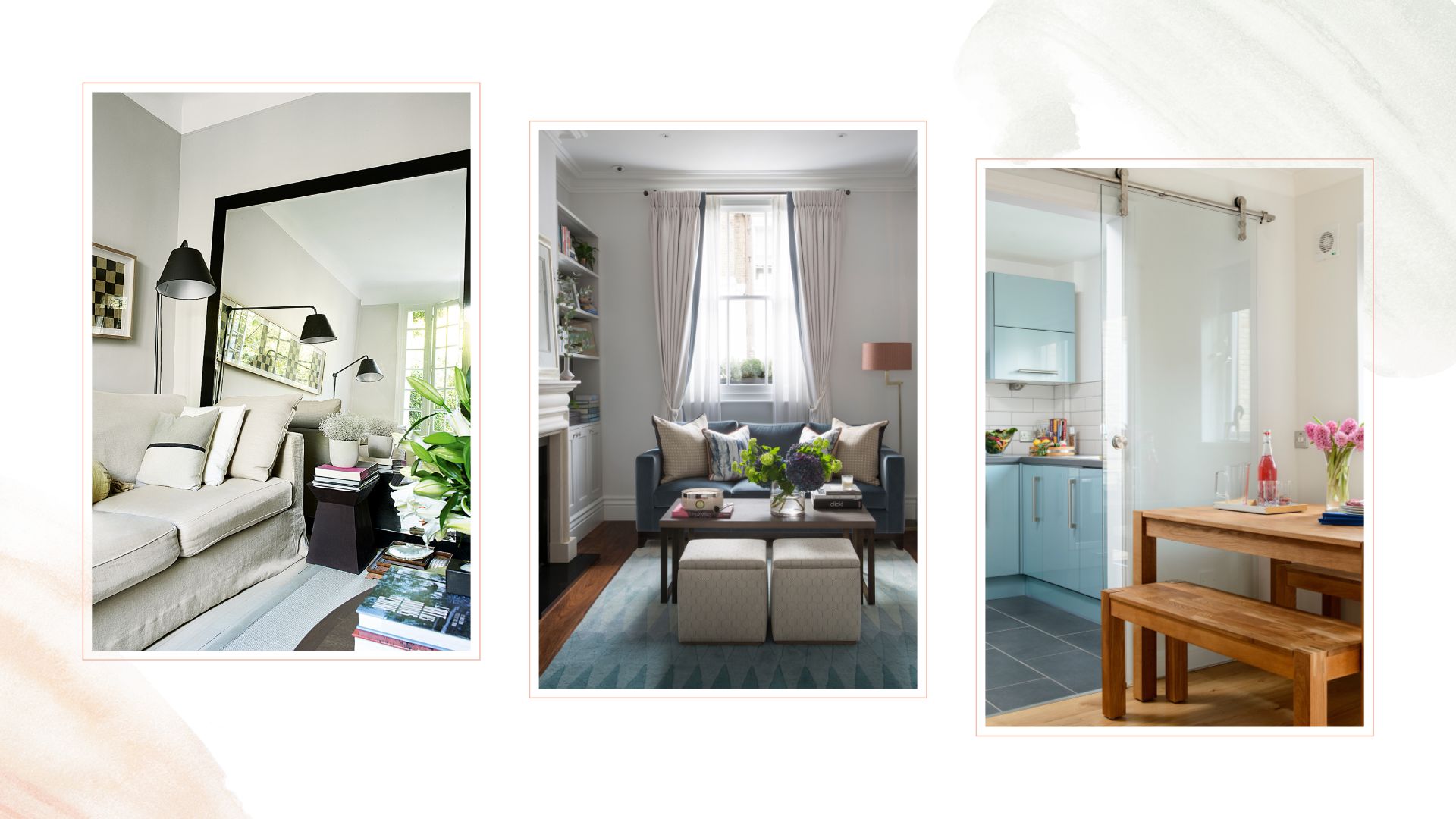

Emily Smith
Making a small room look bigger on a budget is simple with expert styling tricks and smart paint applications that can create an illusion of space.
If you want to know how to make a small space bigger without having to extend it, you have to be smart with your interior design choices to make the most of every square inch available.
We ask key interior designers and stylists to share their top tips, from creative ways to make a room look bigger with paint to how to style furniture and fittings to make your space feel much bigger.
How to make small room look bigger: 14 easy ideas
These 14 simple styling tips can transform any small space, whether you're wondering how to make a small living room look bigger or hoping to maximise space in your kitchen.
1. Declutter
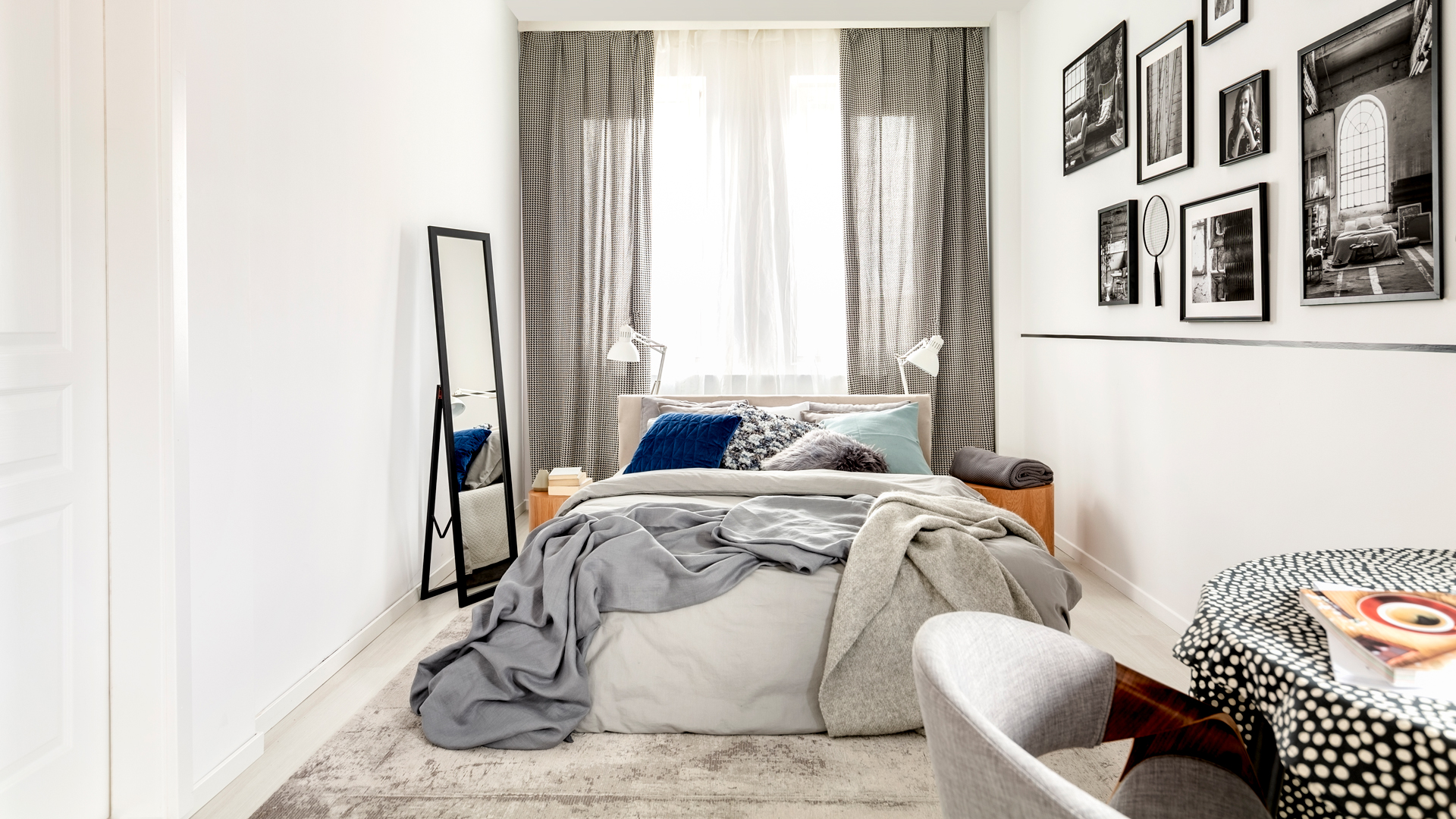
When looking for ideas to make a small room look bigger, most designers will start by recommending a thorough decluttering to ensure the limited space is not compromised further by unnecessary 'stuff'. To organise a small space properly a thorough decluttering exercise is not only good for the soul but also essential for creating the illusion of more space by freeing up surfaces and clearing floors.
"The more you can remove from your living space, the more dramatic the result will be," says Kelly Collins, Interior Designer and Head of Creative at Swyft. "Start by getting rid of old ornaments before moving on to any unnecessary furnishings cluttering up the space."
Nic Shacklock from Online Bedrooms stresses that decluttering is especially important in a small bedroom. “Having a tidy and restful space to sleep in certainly helps homeowners nod off when they go to bed and wake up feeling refreshed and ready to face the day," he tells us. So, if you're wondering how to sleep better, this is the first step.
Sign up for the woman&home newsletter
Sign up to our free daily email for the latest royal and entertainment news, interesting opinion, expert advice on styling and beauty trends, and no-nonsense guides to the health and wellness questions you want answered.
"Decluttering your bedroom isn’t a five-minute job so our advice is to start small," he continues. "Simply tidying away anything on flat surfaces is a great place to start and will make a difference immediately. Move on to decorations and soft furnishing, even donating any furniture you don't need.”
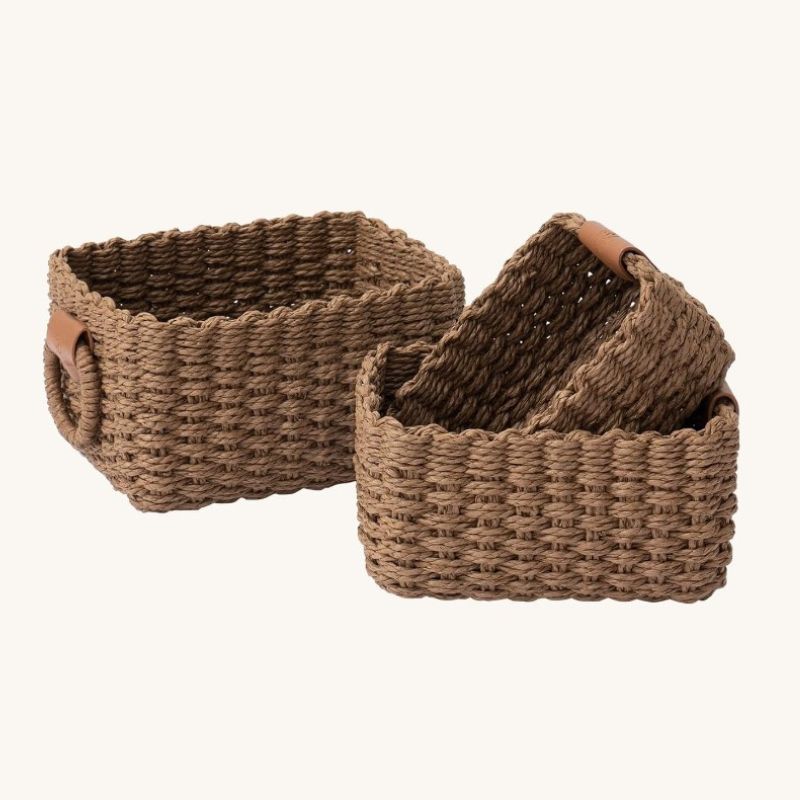
RRP: £22.99 | If you're looking to declutter your space without sacrificing style, then these minimalist wicker baskets are perfect for your space. They're ideal for grouping small things so you don't lose them.
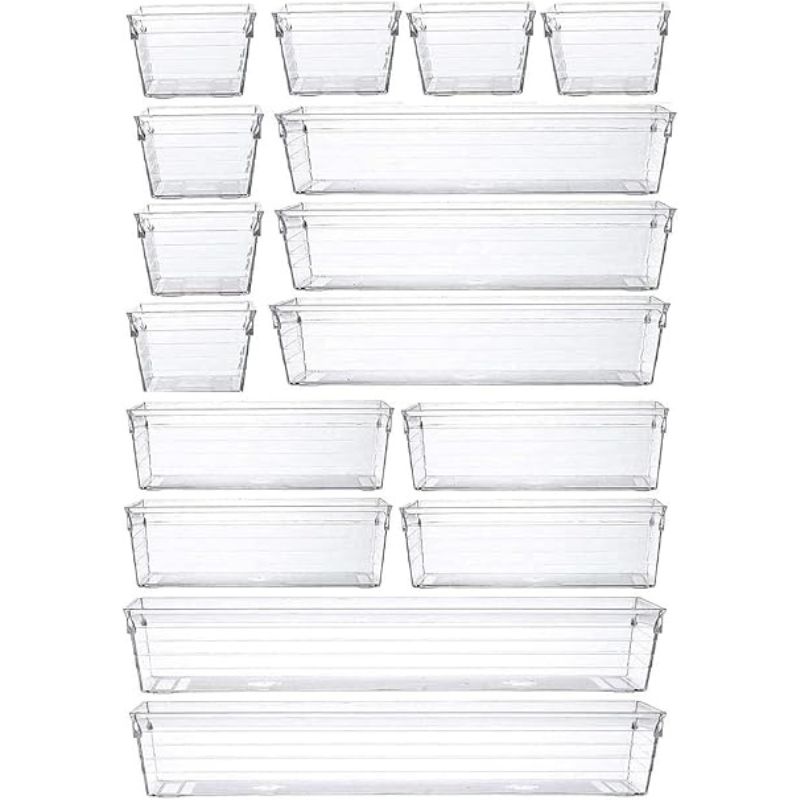
RRP: £12.99 | Sick of your drawers being a chaotic mess? These plastic drawer organisers are just the thing for restoring a little peace and order to your drawers. They're shallow enough to fit into almost any drawer and are particularly great for a make-up lover's vanity.

RRP: £8.99 set of 4 | These crates are great for any storage spaces that need to be kept on show as they're both functional and provide a pop of colour. Not only are these crates easy to stack and store, but they also fold down if you declutter a little too well.
2. Play around with furniture layouts

The success of any small room is the furniture layout, where creating a natural flow that doesn't leave the limited space feeling restricted is key. This is where you might want to try out some small living room layout rules and bedroom layout rules recommended by the experts.
"Before you put your furniture in its final positions, try out a few different layouts to get an idea of what works," advises Kelly. "Play around with furniture combinations - sometimes the most obvious solution isn't the best.
"A good way of doing this is to mark out large pieces of furniture on the floor using tape. This will allow you to ensure the room flows before putting furniture in place."
3. Redirect your lighting
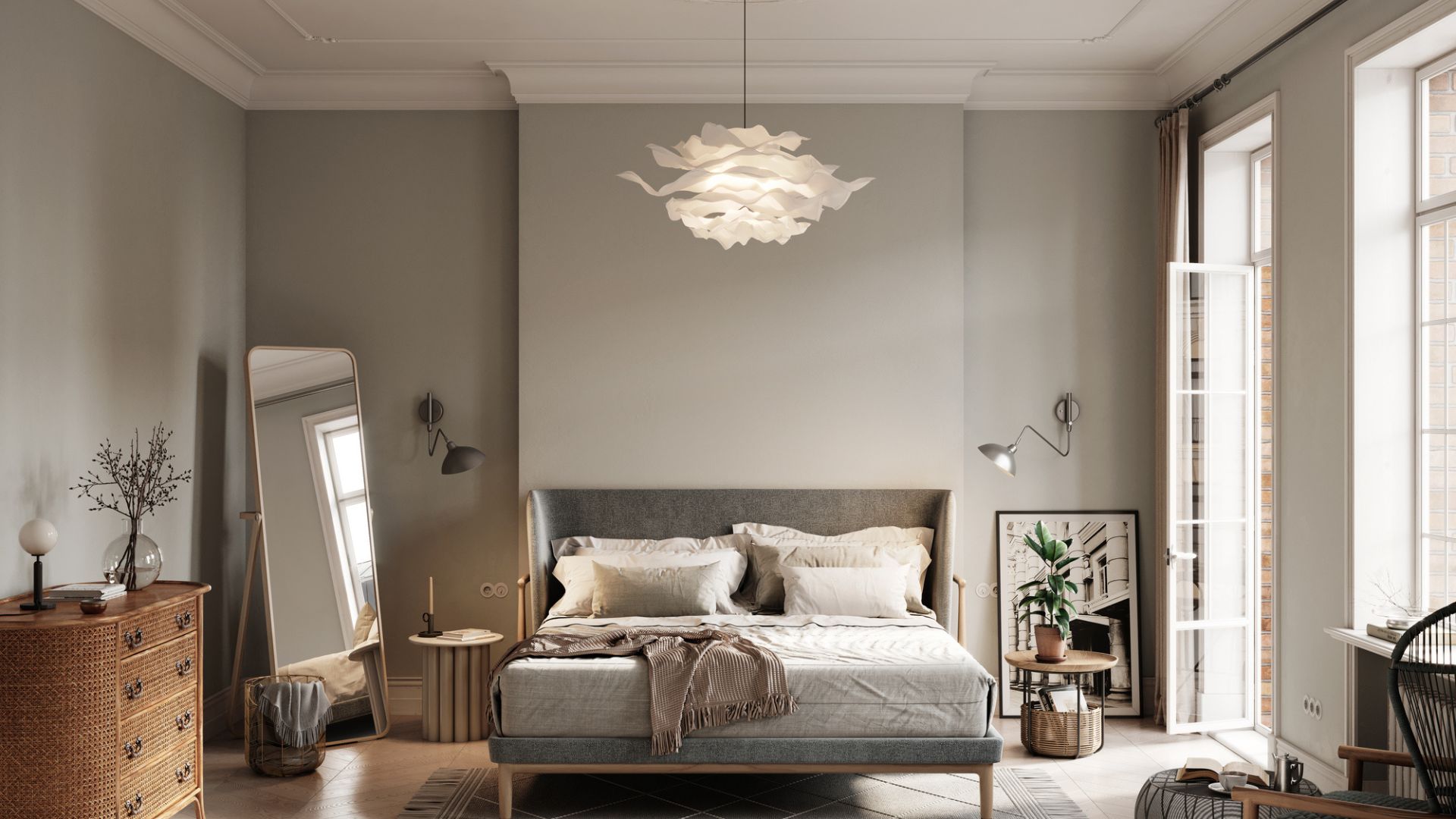
Using the right lighting is an easy yet highly effective way to make a small space feel more generous in size. "Lighting is the easiest way to create a sense of space and airiness, using up-lighters to raise the height of a room for example or a chandelier to draw the eye to a focal point," suggests Martin Waller, founder of Andrew Martin.
To keep things cost-effective it could be as simple as repositioning or moving lighting from one room to another, implementing a layered lighting scheme. As Martin explains, "The positioning of lighting is key to any scheme. There is always a darker, north-facing side to every home and lighting is an easy solution.
"You shouldn’t be afraid of turning on a light during the day, even in spring and summer. Illuminating a dull corner with a table or floor lamp or washing a dark wall with a well-placed wall light can make a huge difference to the feel of any room."
Even simply changing the bulbs can make all the difference to a small space, altering the light temperature. "Generally speaking, cool white or even daylight bulbs are only really good for high tasks or workspace areas where there is no natural light. Layering warmer light is a more natural way to brighten your living space," adds Niki Wright, co-founder of Lights&lamps.
4. Draw attention to the ceiling

Making a feature of the ceiling, fondly referred to as the fifth wall by many interior designers, is one of the biggest interior design trends to gain popularity in recent years thanks to the art of 'colour drenching'.
"If you want to maximise space in a property, or create the illusion of space try to draw the eye upwards," suggests Athina Bluff, lead designer for online interior design service Topology Interiors. "Painting the ceiling is ideal for drawing the eye up to make the space feel bigger."
Painting a ceiling can be considered a budget option because in effect it requires a far smaller quantity of the best interior colour paint than you would use were you painting all four walls.
Of course, you might feel like you shouldn't paint the ceiling in colour because the wrong shade can make it feel more enclosed. The key to making this work is to choose the right ceiling paint colour to make your small room feel more open, where the walls recede into the ceiling.
5. Reposition mirrors to welcome more light
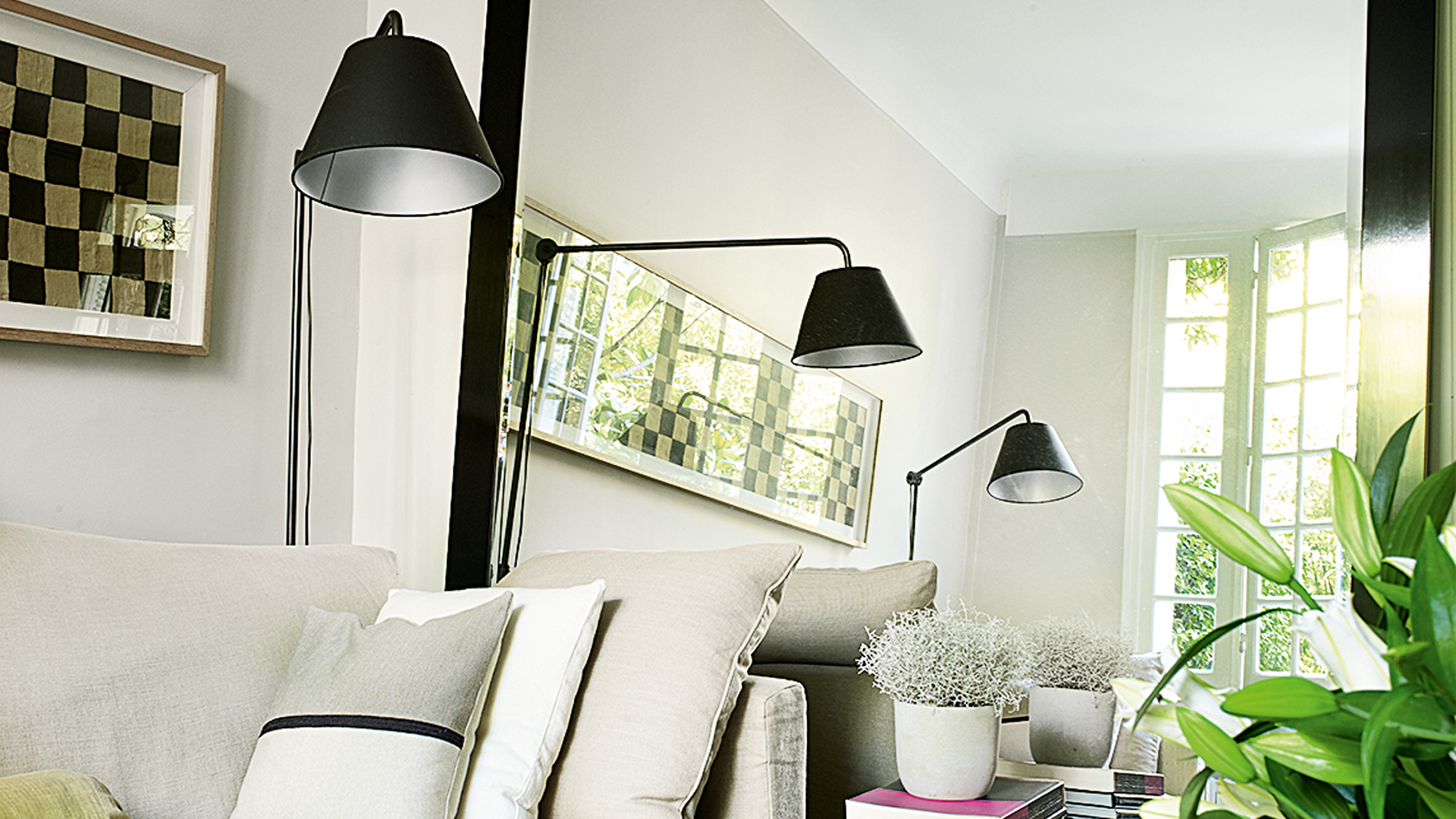
Any small space within the home can benefit from the addition of a mirror to bounce natural light around, but positioning is everything to gain maximum impact. This is ideal for making a dark room feel brighter, and more airy and inviting.
“A well-positioned mirror can instantly make any room look larger," says Shanade McAllister-Fisher, an interior designer at Shanade McAllister-Fisher Design. "Mirrors are fabulous at creating the illusion of depth and reflecting natural light. There is such a huge range of designs out there at super affordable prices, but my advice is to go large, the bigger the better, but stick to a slim line frame for a sure-fire way of enhancing the appearance of scale.”
An entryway is often one of the smallest zones of the home and therefore crying out for a space-enhancing solution to make a big first impression. "If your front door has a glass panel, position a mirror so that it can capture the natural light and reflect this into the hallway," suggests Peter Legg, Lead Designer, där Lighting.
6. Elevate storage
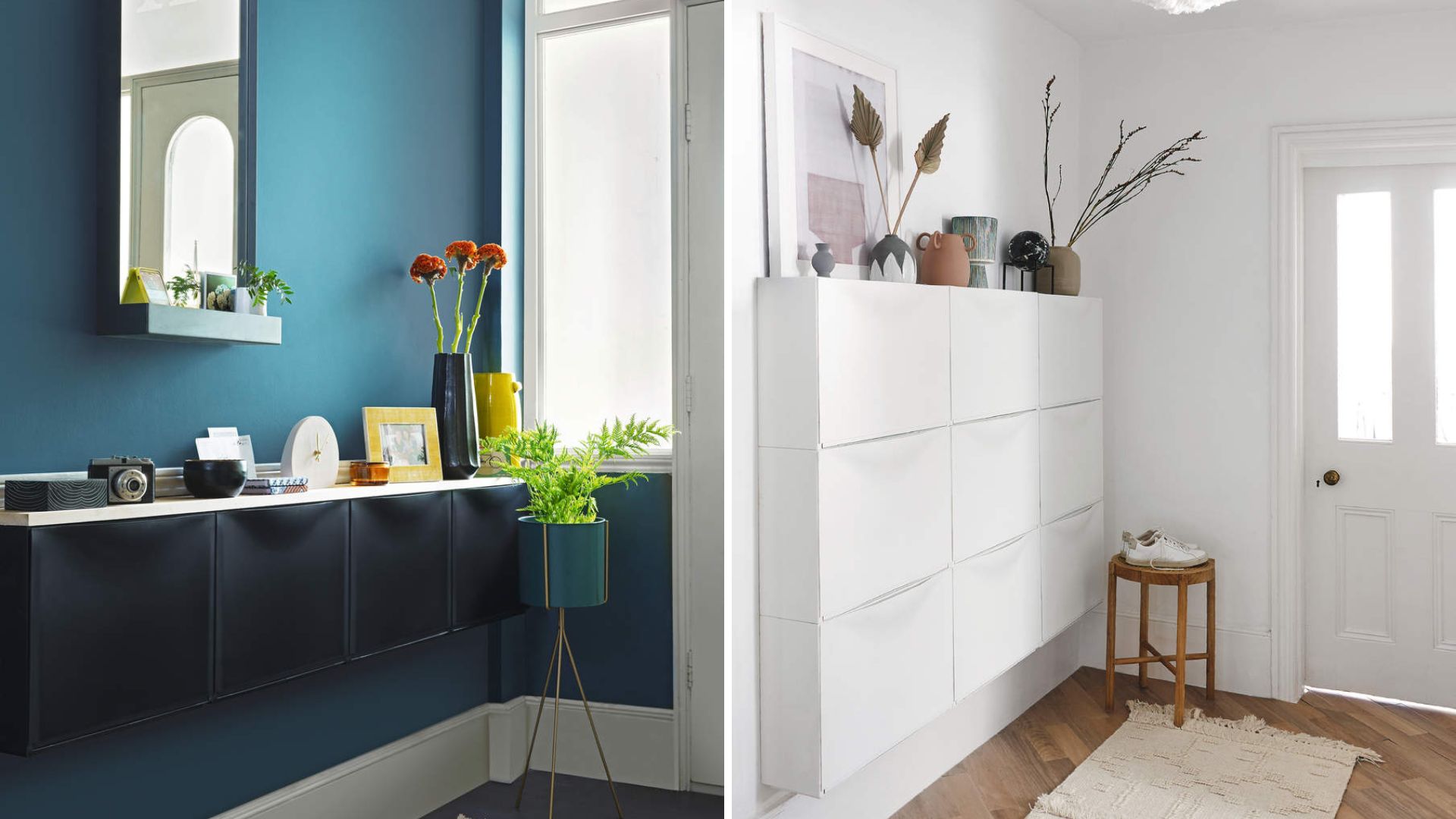
This clever storage idea is particularly effective when organising a small hallway or bathroom where you can seek slimline wall units that provide optimum storage. Bulky storage is the most common mistake for making a hallway look smaller.
Wall-mounted storage is beneficial in more than one way because it uses otherwise wasted vertical space but also elevates units off the floor to free up value floorspace.
The examples shown above are handy IKEA shoe cabinet hacks, using the best-selling TRONES Shoe Cabinets (£25 for a set of 2). Where the units have been painted to match the wall colour the elevated storage blends in seamlessly without encroaching on the small corridor space.
Rikki Fothergill, a bathroom style expert at Big Bathroom Shop explains the benefits when used in a bathroom. "Getting furniture off the floor will allow a design vision to reach the edges where the walls meet the floor," Rikki explains. "This helps give the feel of a bigger room, so switch standing cabinets to wall-hanging furniture."
She adds, “It can be tempting to add lots of storage into bathrooms, but we’d recommend being clever with positioning. Wall hanging or corner units can help save space and provide more opportunities for your eyes to reach the edges of the room.”
7. Raise curtain rods
An effective and easy way to add height to your windows is to raise the bar, quite literally. “By strategically placing curtain rods above the top of the window, you can trick the eyes into thinking the windows are taller than they are," explains Adam Pawson, a design expert at window specialists Safestyle.
“If you don’t own your property, don’t worry there is a renter-friendly hack. Instead of drilling holes into the walls, choose a stick-on hook. Install four evenly across the length of where the rod is to be placed and make sure you press down before adding the curtain rod into position." Just ensure the curtain fabric hides the stick-on hooks for a tidy look.
Adam continues, “To pull this trick off well, make sure you opt for a curtain rod that matches the aesthetic of your scheme. For example, choose matt black if your home reflects a modern aesthetic or opt for a wooden curtain rod if your home is more traditional.”
8. Ditch dark curtains to let in light
Removing any heavy colour or materials from the windows in a small room is a completely transformative step for making the small space feel instantly less restrictive.
"An easy trick and great place to start is to opt for a light, neutral colour scheme to create the illusion of bigger windows," explains Adam. “If you find your home has small windows, selecting neutral shades not only instantly brightens a room but these lighter-coloured curtains allow more natural light to shine through, helping to create the illusion of a bigger room."
9. Make use of door space
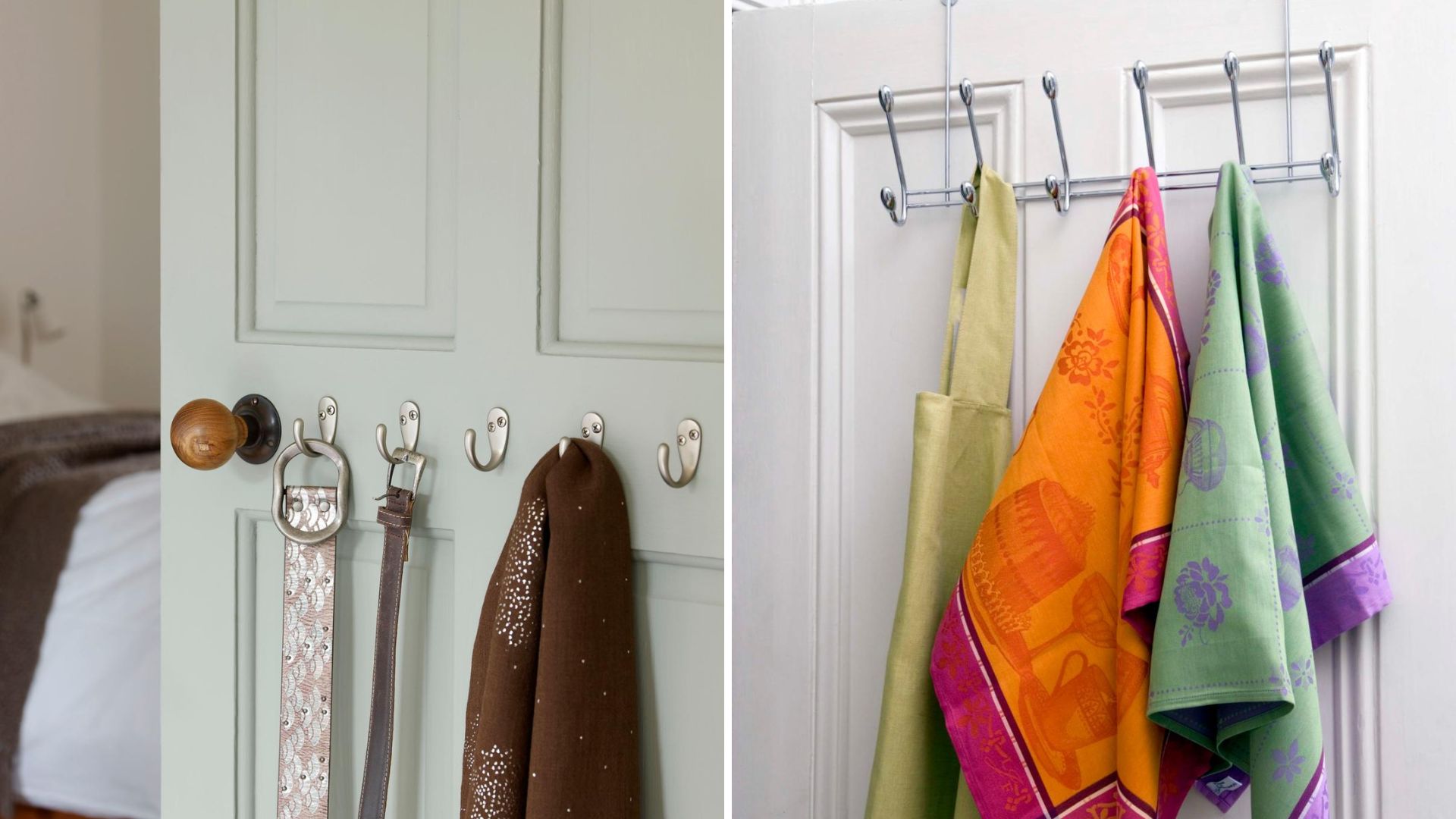
Utilise all your surface and wall space - including doors. "Door racks are a great idea to utilise space that would otherwise be a wasted area," says Kelly.
When looking to organise a small kitchen she suggests, "You can add racks or hooks behind doors for storage of tea towels, herbs and spices in the kitchen. This can also be applied by adding hooks on the inside of cupboard doors to store items like pan lids to free up cupboard room."
But given you have entry doors for every room the potential is endless. In a small bedroom, the back of the door provides the perfect space-saving solution for an accessories rail while in a bathroom you could use it to hang towels and bathrobes.
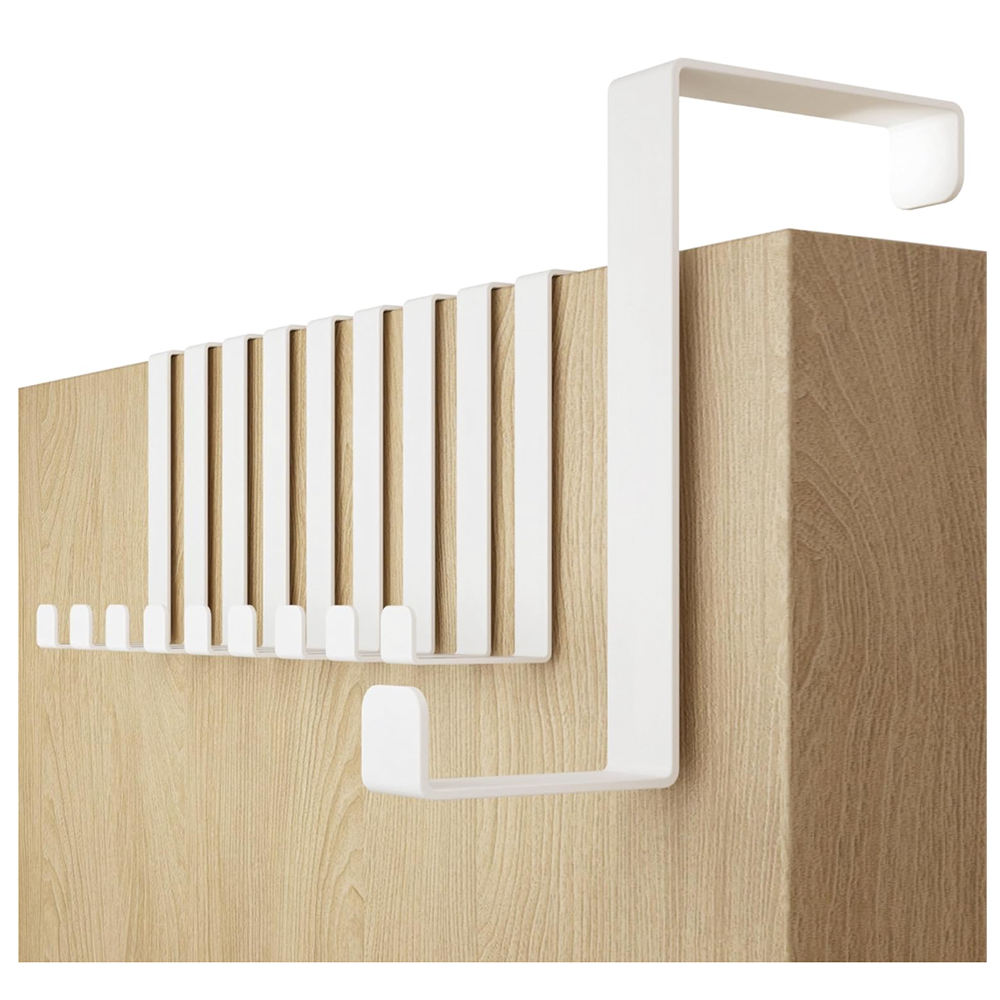
RRP: £7.98 | You get a set of 10, but because they are individual hooks, you can use as few or as many as you need.

RRP: £7.99 | This chrome finish wire solution boasts 10 Hooks on an anti-slip frame to support towels, coats or bags hanging on the door all day.
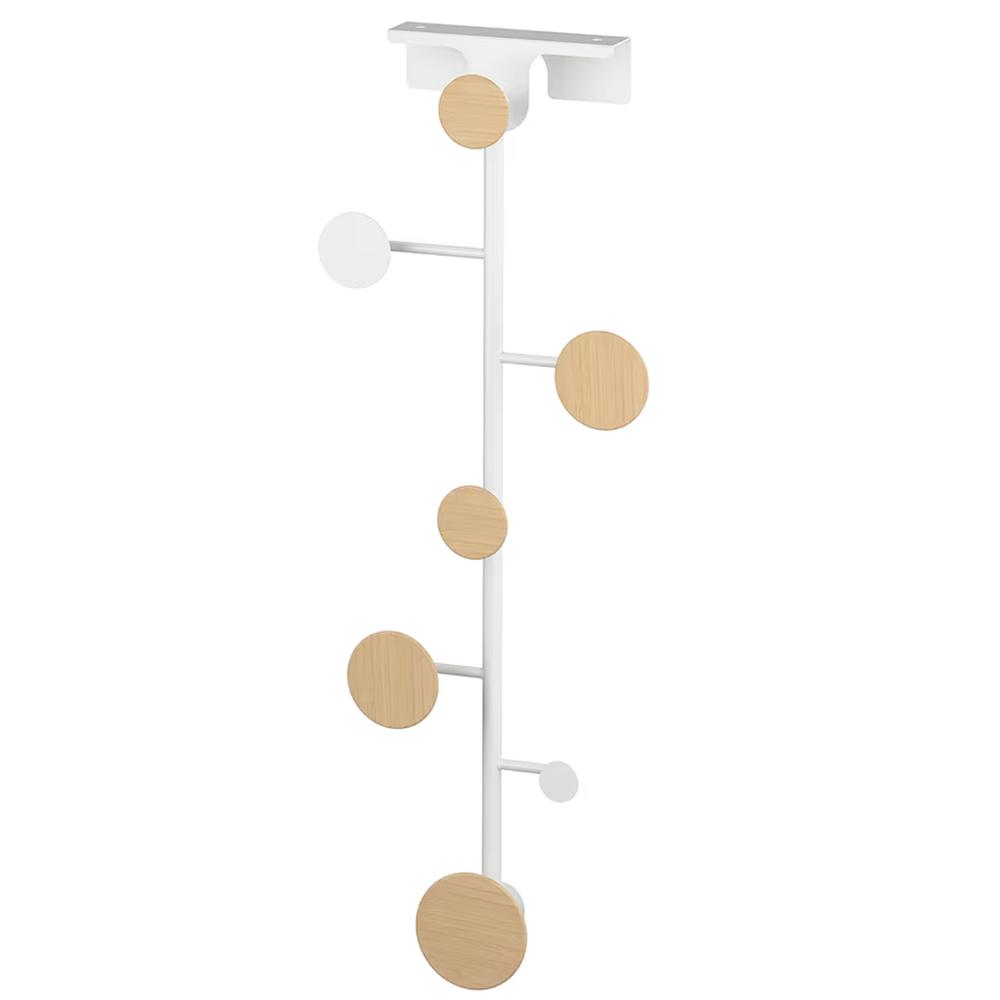
RRP: £19 | This adjustable set of hooks makes a style statement thanks to the decorative disc design. The 7 round hooks are ideal for smaller hand towels, tea towels or even jewellery.
10. Choose multifunctional furniture pieces
"There are also many multi-functional pieces on the market nowadays, suited to compact living," explains Emma Deterding, founder and creative director, of Kelling Designs.
"From coffee tables with lifting tops that allow you to eat dinner or work from home with ease, to clever footstools and ottomans with built-in storage and even pull-out guest beds, you can make sure your space is designed for your lifestyle."
11. Open up your doorways
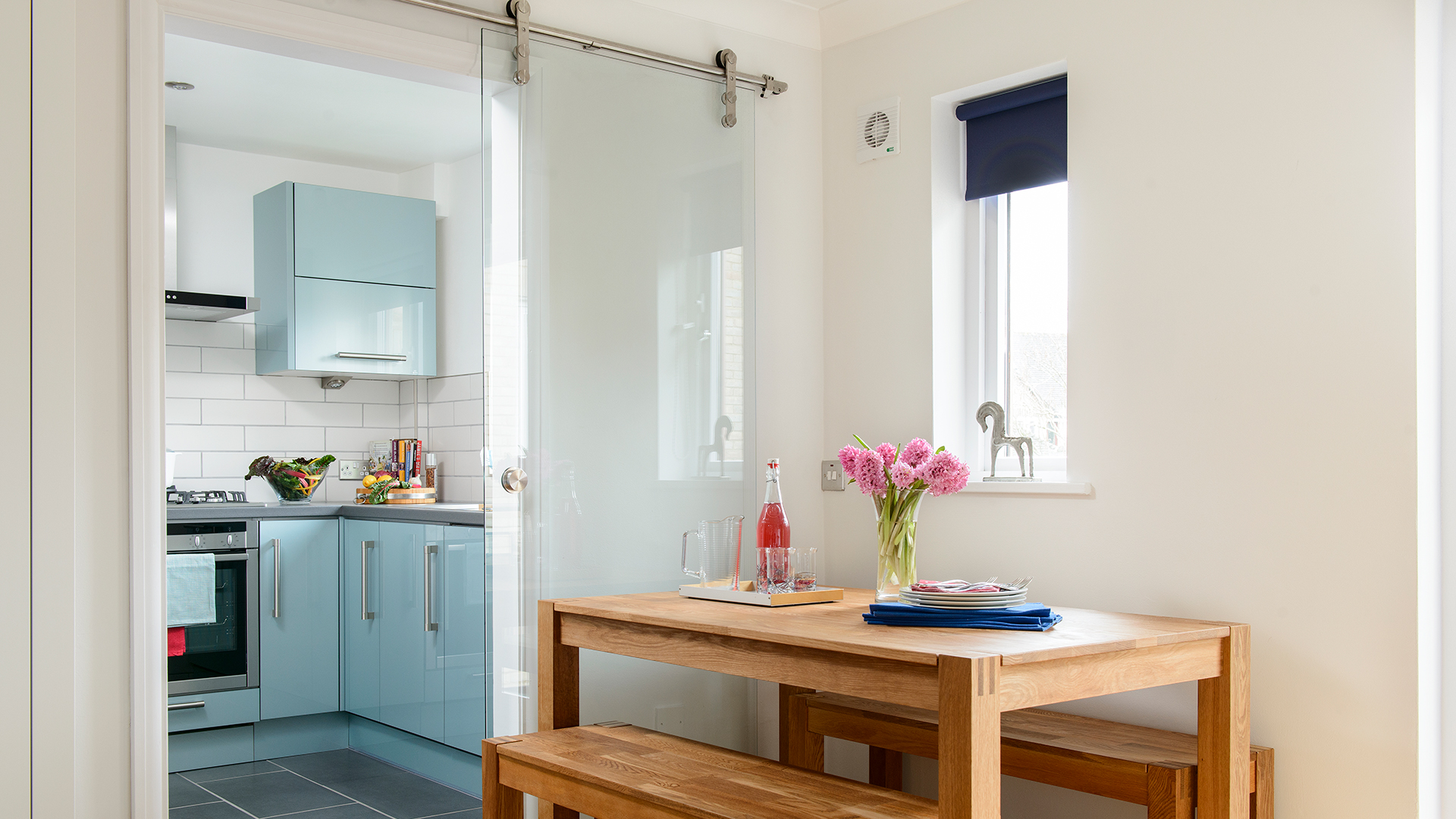
Look at your doorways from a different perspective by making them less of a hindrance to an already limited space.
"If your door opens into your small room, it can eat into valuable floor space and make the room feel more cluttered. Consider swapping your inward opening door for an outward opener or think about installing a sliding door in its place," suggests Kelly.
Depending on doorframes and surrounds this should be a case of reversing the hinges, so shouldn't be too costly a job. "Another option is to remove the door altogether and really open up your living area," Kelly adds.
12. Add houseplants
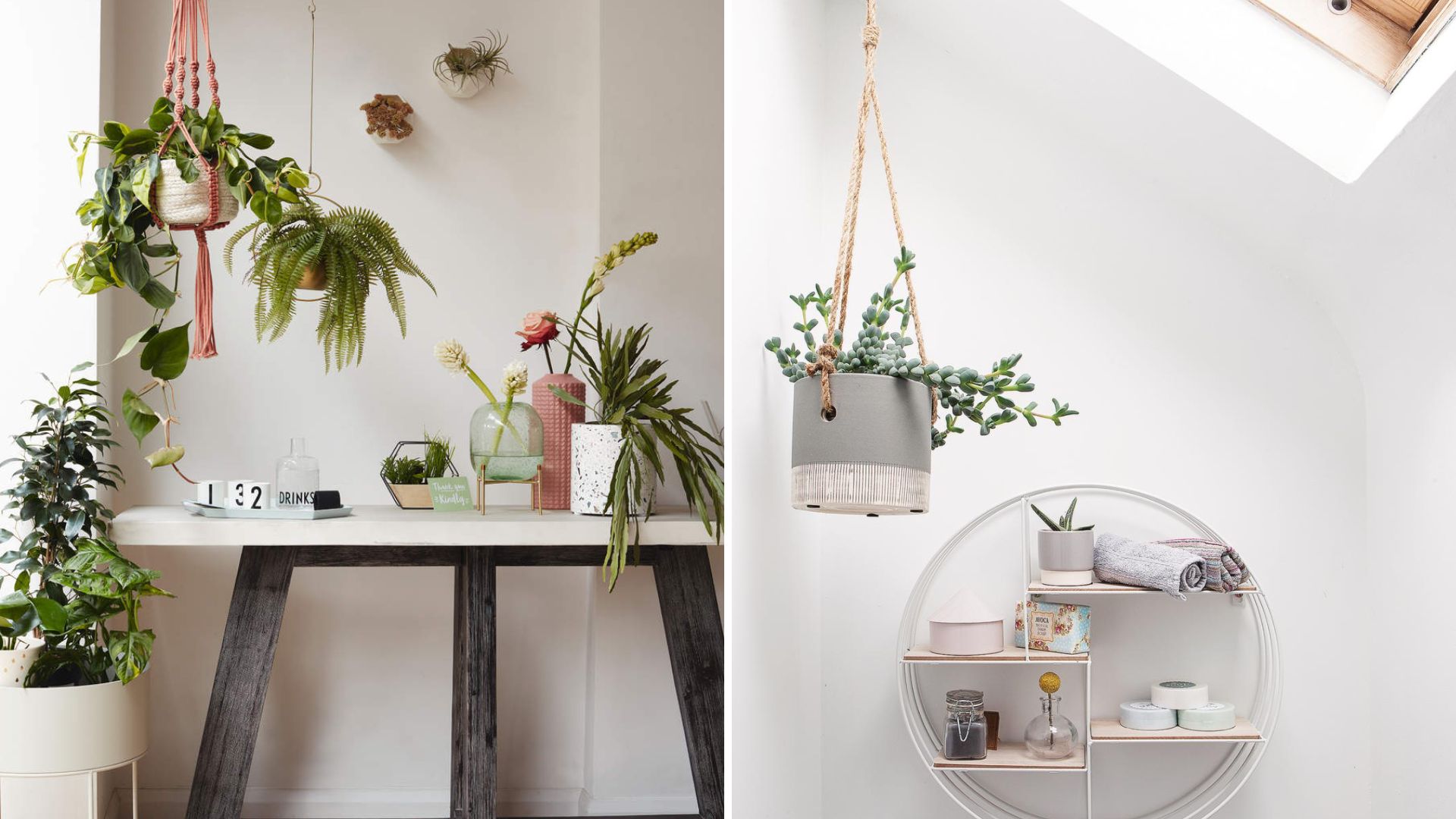
Our love of houseplants shows no signs of wavering and nor should it because plants can really help make a small space look and feel bigger.
"Plants add colour, height and homeliness to rooms of all shapes and sizes," explains Kelly. "If you’re working with a small space, choose a couple of tall plants that will add a big impact on the look of the room. You could also place a plant with hanging foliage on your shelves to add even more greenery to the design."
You can even hang trailing plants from a rail along one wall to draw the eye up and add interest to an otherwise empty wall that offers no depth to the space. Drawing the eye upwards with a pop of greenery is a lovely way to welcome height and perspective to a tiny room.
Check our guide to the best places to buy plants online – these websites will also guide the best environment for each plant, as well as notes on how large it could get. The easiest houseplants to keep alive are the sure way to start.
13. Use lighter colours
If you're looking to embrace some of this year's biggest interior colour trends, then the experts recommend keeping your colour palette light. A fresh lick of paint needn't cost the earth either, there are lots of great budget-friendly options out there.
“Light-coloured walls are an age-old way to maximise the size of a room and make it appear much more spacious than it actually is," explains Ethan Fox, interiors expert from Furniture World. "Light walls reflect more light and blend more effortlessly with ceilings to expand the appearance of space. This doesn’t have to mean painting your walls white, you can also use light pastels, soft beiges or creams, to brighten and open up your room."
Light colours are also some of the best paint colour ideas for hallways as they keep that compact space feeling open and bright.
14. Keep the decor minimal
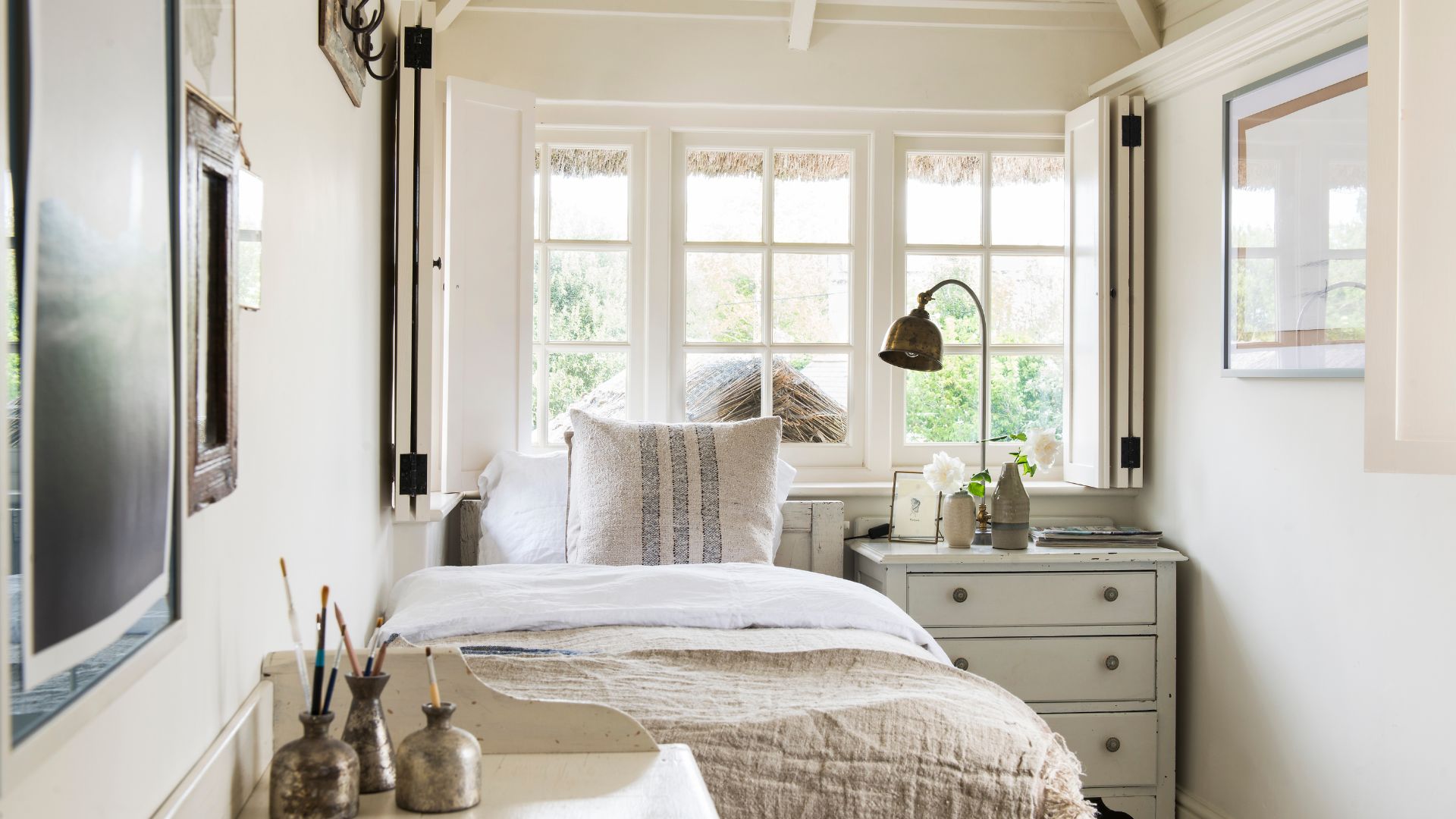
Whilst you might prefer the feel of the maximalist decor trend, keeping your home accessories to a minimum can make your space look bigger and save you some money too.
"Minimalist interiors have the remarkable ability to make a space feel significantly larger due to their focus on simplicity and the reduction of visual clutter," explains Shelley Cochrane, accessories buyer at Furniture Village. "By removing unnecessary items, the minimalist design creates an environment where the eye is not overwhelmed, allowing the space to breathe and feel more open,"
She adds, "The use of clean, simple lines in furniture and decor eliminates bulky, ornate pieces that can make a room feel cramped. Additionally, minimalist interiors often embrace open floor plans, reducing partitions and walls, thus promoting a continuous flow of space."
Maybe it's time to welcome a touch of 'minimaluxe' decor and say goodbye to the curated clutter look.
FAQs
What colour makes a small room look bigger?
Choosing the right colour for your small space can make all the difference. From happy paint colours that will make your room feel inviting or the best white paint colours to make walls look higher, there's a lot of choice.
Bailey Williams, a colour expert at Earthborn, explains, "Although opting for brighter colours in this space may seem like a mood-boosting choice, they can also make a room appear smaller."
"Instead, consider opting for some calming neutrals or soft pastels to accentuate the sense of more space and create a serene and focused atmosphere. To introduce a touch of colour without being overly distracting, you can also choose to paint your ceiling. Dubbed the "fifth wall", this space offers a unique opportunity to infuse the room with subtle hues that enhance the perception of space while maintaining a harmonious atmosphere."
For hallways, he recommends opting for light and neutral tones such as soft white, light grey or even a pale pastel, as this will give the illusion of a more open space.
He continues, "Another way to give the illusion of space is by painting the bottom half of the wall with a darker shade, as this not only adds visual interest but helps disguise any scuffs and marks that can appear over time."
Keeping costs down when redecorating your home can feel pretty challenging, but finding smart ways to make big differences will help. In the same way that tidying and recycling can transform your garden on a budget, you needn't spend money on new furniture or decor just to make your room feel bigger.

Tamara is a highly experienced homes and interiors journalist with a career spanning over 22 years. Now the Lifestyle Editor of womanandhome.com, she previously spent 18 years working with the style teams at Country Homes & Interiors and Ideal Home. With these award-winning interior teams, she gained a wealth of knowledge and honed her skills and passion for styling and writing about every aspect of lifestyle and interiors.
A true homes and interiors expert, Tamara has been an ambassador for leading interior brands on multiple occasions, including appearing on Matalan’s The Show and presenting at top interior trend forecasting events such as the Autumn Fair and Spring Fair.
- Emily SmithDigital lifestyle writer
-
 Kate Moss's best looks, from 90s slip dresses to leopard print staples
Kate Moss's best looks, from 90s slip dresses to leopard print staplesEffortless and stylish, our favourite supermodel has an iconic style that can easily be recreated
By Kathryn Lewsey
-
 Helen Skelton's layered look is giving me plenty of country chic style inspiration this Earth Day
Helen Skelton's layered look is giving me plenty of country chic style inspiration this Earth DayShe paired a mocha-coloured jumper with a blue shirt and a pair of wellies by Kate Middleton's favourite brand
By Caroline Parr